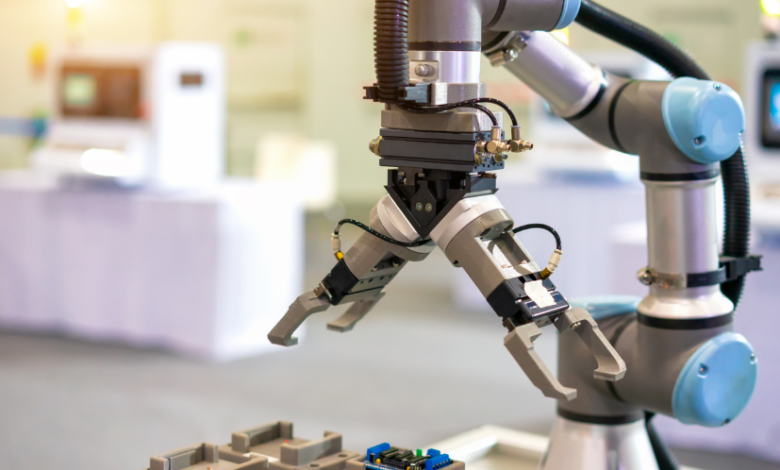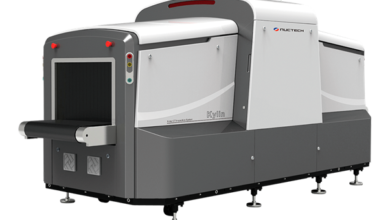What Are Suction Cups Used For? Top Uses in Robotics and Vacuum Systems

When people ask “what are suction cups used for?” The answer goes far beyond simple household tools; they’re essential components in robotics and vacuum systems across multiple industries. Suction cups enable precise, contact-free gripping and movement of objects, making them ideal for automation, packaging, and assembly processes.
From robotic arms handling fragile materials to vacuum systems ensuring stable lifting in high-speed production lines. In this article, we’ll uncover the top uses of suction cups in robotics and vacuum technology, highlighting how they help streamline modern industrial operations.
How Suction Cups Work
Suction cups hold objects by creating a vacuum, where internal air pressure is lower than the outside. When you press a suction cup onto a smooth surface, the air inside is pushed out. The higher air pressure outside then pushes the cup tightly against the surface, holding it firmly in place.
In industrial and robotic systems, suction cups are connected to vacuum generators or ejectors that use compressed air to create a stronger, controlled vacuum. This allows machines to lift, move, and hold objects securely, even at high speeds.
Key Steps in How They Work
- Contact and Seal: The soft edge of the cup forms an airtight seal on smooth surfaces like glass, metal, or plastic.
- Vacuum Creation: Air is removed from between the cup and surface, manually or with a vacuum generator.
- Pressure Difference: The higher outside air pressure pushes the cup against the surface, creating grip.
- Hold and Release: The cup holds as long as the vacuum remains. Releasing the vacuum lets air back in, breaking the seal easily.
What Affects Performance
- Surface Quality: Smooth, clean, and flat surfaces create stronger suction.
- Material: Silicone, rubber, or polyurethane are used depending on flexibility and temperature needs.
- Shape: Flat cups work best on flat objects; bellows cups handle curved or uneven ones.
- Vacuum Strength: Stronger vacuums hold better but use more energy.
Role in Robotics
Suction cups are essential tools in robotics, often used as the main gripping device for handling, assembling, and packaging materials. They use vacuum pressure to grip objects without direct contact, allowing robots to pick up, move, and place items quickly and accurately with minimal risk of damage.
Robots with suction cups can safely handle diverse materials without mechanical clamps or fingers. This makes suction cups highly versatile and valuable in industrial automation, manufacturing, logistics, and electronics production.
How Suction Cups Support Robotic Operations:
- Pick-and-Place Automation: Robots equipped with suction cups can lift, transfer, and position products accurately in high-speed production lines.
- Material Handling: Used to move large, flat, or fragile items such as glass, tiles, circuit boards, and plastic panels.
- Assembly and Sorting: Ideal for repetitive tasks like assembling components or sorting packaged goods.
- Flexible Gripping: Suction cups can adapt to various shapes and sizes, making them suitable for multi-product production environments.
- Non-Damaging Handling: Their soft, flexible material ensures that even delicate surfaces remain scratch-free and intact.
See also: Online Game Bobfusdie7.9 Must-Watch Stocks for Tech Investors
Advantages in Robotic Systems:
- Simplifies end-effector design (fewer moving parts than mechanical grippers)
- Enables faster cycle times and consistent operation
- Reduces maintenance needs and system wear
- Improves safety by minimizing mechanical stress on products
Suction cups enable efficient, precise, and flexible material handling in robotic automation.
Role in Vacuum Systems
A suction cup is a device used to grip, lift, or hold objects by creating a vacuum between the cup and the object’s surface. It connects the vacuum source (like a pump or ejector) to the item being handled, allowing materials to be moved or held securely without using mechanical clamps or direct contact.
The suction cup works as a gripping tool in many automated and robotic systems. When the vacuum source removes air from inside the cup, the air pressure outside becomes higher than inside. This outside pressure pushes the cup firmly against the object, creating a strong, secure grip.
This simple method enables safe and reliable handling of materials ranging from delicate electronics to large glass panels.
Key Features of a Suction Cup in a Vacuum System:
- Vacuum Connection: Linked to a vacuum generator or ejector that controls air flow and suction strength.
- Flexible Lip or Edge: Conforms to the object’s surface to create an airtight seal.
- Mounting Adapter: Allows connection to robotic arms, grippers, or lifting equipment.
- Material and Design Options: Made from silicone, rubber, or polyurethane to suit different temperatures, textures, and weights.
Functions in a Vacuum System:
- Lifting and Holding: Used to move objects safely in manufacturing, packaging, and automation.
- Positioning and Assembly: Helps robots pick, place, and align components precisely.
- Non-Contact Handling: Ideal for lifting fragile or smooth materials without causing damage.
A suction cup uses vacuum pressure to hold objects securely, allowing them to be moved efficiently without causing damage.
Top Industrial Applications
Suction cups safely and efficiently move objects without direct contact. Using vacuum technology, they can handle items precisely in both manual and automated operations. Below are some of the main industrial uses of suction cups:
1. Manufacturing and Assembly
Suction cups help pick up, move, and assemble parts in factories. They allow robots or machines to handle materials like metal sheets, glass panels, plastic pieces, or circuit boards with precision.
- Industries: automotive, electronics, consumer goods
- Benefits: accurate positioning, gentle handling, less surface damage
2. Packaging and Labeling
In packaging, suction cups are used in machines that lift, open, or place boxes, bottles, bags, and trays.
- Applications: filling, sealing, labeling, palletizing
- Benefits: fast operation, less downtime, and it works with many materials.
3. Glass and Metal Handling
Suction cups are perfect for lifting large, smooth surfaces such as glass sheets, windows, or metal plates. They grip strongly without scratching or bending the material.
- Used in: construction, glass making, sheet metal processing
- Benefits: safe lifting, stable handling, less manual work
4. Electronics and Semiconductors
In electronics, suction cups handle tiny, delicate items like wafers, chips, and screens. Their non-contact grip avoids static and contamination.
- Used in: PCB assembly, semiconductor production, screen manufacturing
- Benefits: precise handling, no damage, clean operation
5. Logistics and Warehousing
In warehouses, suction cups are used in automated systems for picking, packing, and moving goods.
- Benefits: faster operations, improved automation, and less manual lifting
Across all these industries, suction cups provide speed, safety, accuracy, and versatility. They boost automation, quality, and productivity across various tasks.
Advantages of Using Suction Cups
- High Precision and Accuracy
Suction cups allow for accurate placement of materials and reduce the risk of scratches or surface damage compared to traditional gripping tools.
- Improved Safety and Ergonomics
Suction cups reduce manual lifting, easing physical strain on workers and lowering the risk of injuries.
- Cost and Maintenance Efficiency
Suction cups require replacing only worn parts like rubber seals, saving money, reducing waste, and making maintenance easier.
- Versatility and Adaptability
Suction cups can hold objects on flat, curved, or uneven surfaces. This flexibility lets them be used for many different tasks in a variety of industries.
- Protection for Delicate Surfaces
They provide gentle handling for fragile items such as glass, coated materials, and polished metals without leaving marks or damage.
- Environmentally Friendly
The replaceable-part design reduces waste and resource use, making suction systems more sustainable and eco-friendly.





